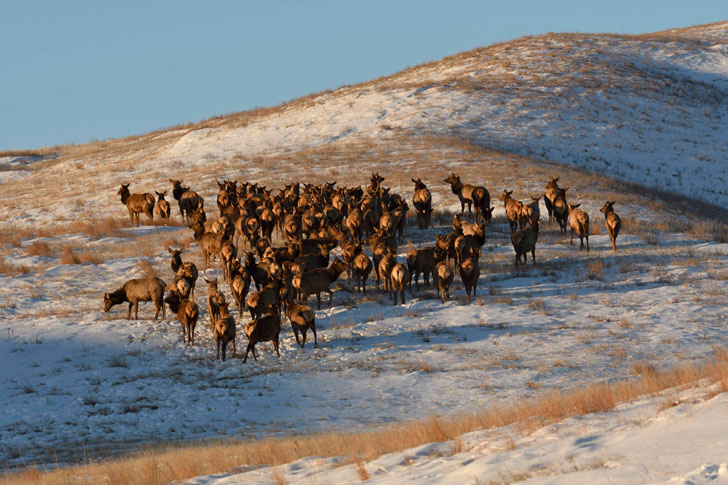Elk Culling At Wind Cave National Park Sends More Than 14,000 Pounds Of Elk To The South Dakota Food Bank
Wind Cave National Park was recently completed with 14,000 pounds of meat sent to the food bank. CWD is a disease of the nervous system in deer and elk.
South Dakota Game Fish and Parks (SDGFP), Greater Dacotah Chapter of SCI, South Dakota Sportsmen Against Hunger, Black Hills Sportsmen’s Club and volunteers assisted in this project. Volunteers worked with Wind Cave park staff in bitter winter weather conditions to cull the elk population to reduce the effects of CWD. The cull resulted in a reduction of 262 animals from the elk population.
 The National Park Service partnered with SDGFP to distribute elk meat that had tested negative for CWD to Feeding South Dakota, an organization dedicated to eliminating hunger in the state. Only meat that tested negative for CWD was distributed.
The National Park Service partnered with SDGFP to distribute elk meat that had tested negative for CWD to Feeding South Dakota, an organization dedicated to eliminating hunger in the state. Only meat that tested negative for CWD was distributed.
In all, these conservation groups provided more than seven tons of high protein elk meat to help feed struggling families in South Dakota. With the cultural significance of elk, a large share of the meat harvested from Wind Cave was distributed throughout the nine Native American Reservations in South Dakota. This highly nutritious meat helped to provide a source of protein to hundreds of families in need.
Scientists are trying to determine if the park’s CWD prevalence rate is linked to the higher density of elk in the park. It is believed that reducing the park’s elk population will also reduce the prevalence of CWD. The effectiveness of this management action will be evaluated over the next several years to coincide with the lifespan of the disease in elk. This action is consistent with the range of options presented in the Wind Cave Elk Management Plan/ Environmental Impact Statement signed in 2009. The winter cull serves as an excellent example of what Federal, State and NGOs can accomplish when they work together in wildlife management and illustrates the positive impact of hunting as a management tool in our National Parks.

